Stone Age dates back to roughly 2.5 million years ago when humans shared the earth with now-extinct hominid relatives.
Humans worked with stones, so the age got its name as the “stone age.”
Humans made weapons carved from stones, agricultural machinery, household objects and even built buildings out of rocks.
Henges, Dolmens were the primary stone buildings made by stacking stones together with clay, mud, and wood.
Initially, stone buildings were made for residential purposes only, built into round molds out of shells, animals bones but later on, decorative monuments were also constructed.
Stonehenge stood out as an exemplary Neolithic architecture that is still intact after many years.
Neolithic monuments were made out of basic materials, but surprisingly, such buildings have a very long life span which could be very mysterious.
Did stone age houses have chimneys?
Content
The houses in the stone age had high elevated roofs to seep smoke, so basically, chimneys were not in practice.
Was Stonehenge used as a calendar?
Stonehenge was used as a solar calendar by tracking down movements of the sun and the moon.
Did Neolithic houses ever use wood?
Neolithic longhouses were made out of stones and wood in around 6000 B.C.
The Neolithic

The Neolithic was the terminal stage of the prehistoric stone age characterized by stone tools.
It succeeded the Old Stone Age era known as the Paleolithic Age and preceded the Bronze Age.
The Neolithic period also renowned as the New Stone Age, brought advancement in stone works from soft chapped stones to hard ground.
And polished rocks used as agricultural tools, weapons, architectures, and numerous domestic households.
The Neolithic time dated to 10,000-1800 BCE when primitive men started cultivating and harvesting barley wheat and animal domestication.
They devoted their time to assembling settlement places with no need for constant migration.
Architectural evolution reached its peak during the new stone age utilizing thick timber, tree trunks, clay, and reeds.
The structures of the buildings differed in Asian and European continents.
Unlike Romans, famous for their distinct styled monuments, Neolithic architecture gained fame for pioneering the construction of temples, tombs, and other erections of social significance.
Megalithic Tombs discovered across Europe, Casa Moura; a dolman structure in Portugal, Skara Brae; the largest island in Scotland whose dwellings were estimated to have been from the stone age were the famous examples of Neolithic architecture.
The Fertile Crescent
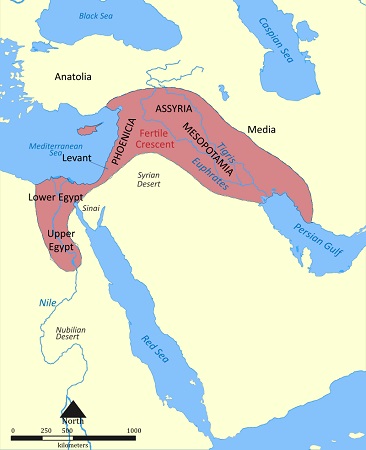
A boomerang-shaped region in the Middle East situated between the Arabian desert to the south and Armenian Highland in the north was the Fertile Cresent.
The crescent appearance of the land was contemplated as the “Cradle of Civilization.”
It was the birthplace of several technological advancements in premedical time, including agriculture, writings, irrigation, wheels, and glasses. The soil in the area was relatively fertile due to exposure to the Nile river in Egypt.
Furthermore, it was bounded by the Mediterranean sea and Tigers and the Euphrates flowing across the fertile Crescent’s heart.
The access to freshwater made it feasible for agriculture to prosper tremendously as humans initiated experiments with crop cultivation.
Wetlands in the region produced abundant edible wild species, which brought a radical change in prehistoric human attributes for harvesting cereals and grains back in 10,000B.C.E.
Archeological sites in Fertile Crescent

Besides being signified as the cradle of civilization, the Fertile Crescent has been defined as the crucial area for the Neolithic Revolution.
Archeologists from France and Britain have discovered remains of Mesopotamian cities.
Ziggurat of Ur, built around 2100 B.C, was an enormous temple erected in southern Iraq that depicted exemplary Sumerian architecture.
Hattusha, a UNESCO World Heritage in Turkey, existed during the second millennium B.C and served as the capital of the Hittite Empire.
Babylonia was the last Mesopotamian metropolis before falling into the hands of Persian in 500B.C.E stood on the banks of the ancient Euphrates river.
Fertile Crescent now

The fertility of the Fertile Crescent faded away as the rivers like Tigris Euphrates dried up due to massive irrigation channels dams constructions.
Similarly, a considerable number of marshlands and wetlands disappeared, converting a thousand hectares of land into sandy deserts.
Climate change and fossil extraction have further worsened soil status in the present era.
Standing Stones
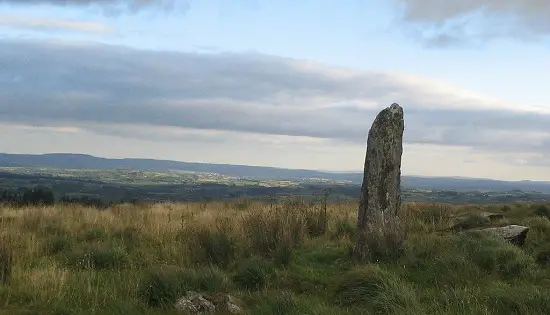
Standing stones or stone circles were huge boulders erected by the primordial men in the stone age.
The sole purpose of such stones always remained an unresolved mystery. However, historians believed the standing stones were used for defense lining or rituals.
Also referred to as gallauns, the standing stones varied from the Bronze age to the early iron age, which encouraged ogham inscriptions on the rocks during that era.
There are many standing stones around the world left behind by stone age people that revolutionized architecture.
Some of the standing stones found are as follows:
Stonehenge (England)

Stonehenge is the most famous monument of ancient times in Salisbury, England. It was considered built in multiple stages, earlier about 5000 years ago, marking the initial phase.
Likewise, the unique stone circles were completed in the late Neolithic age in 2500 B.C.E. The final phase was completed with burial mounds in the Bronze Age.
Historians deduced that the stones were carried on rafts to England, requiring months of hard work using sleigh or rollers.
Picturesque landscapes of Salisbury plains were strewn around by a series of stones renowned for sacred purposes.
There were two types of stone: Sarsens, the larger ones, and bluestones, the smaller ones in the Stonehenge.
Sarsens were constructed in concentric patterns, whereas bluestones were erected in a double arc.
Stonehenge underwent numerous reconstructions in the later period to ensure the preservation of such historical monuments and the safety of visitors due to the sudden falling off of Sarsens.
Stone Spheres (Costa Rica)
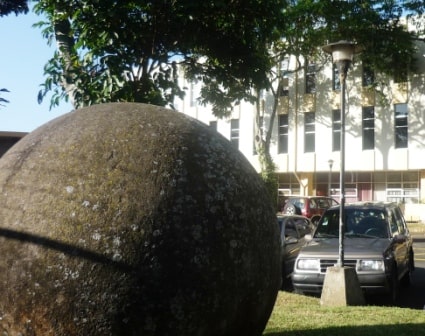
Stone spheres in Costa Rica were made up of hard igneous rocks molded by humans into a rounder shape.
Some archeological studies indicated the significance of these stones in astronomical navigation and alignments.
They were connected to Pre-Columbian pottery, whose exact origins and creation date remains debated.
Carnac (France)
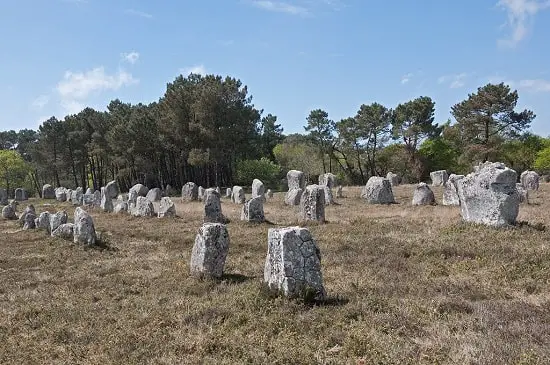
Carnac in France was a series of single monoliths dating back to the Medieval Neolithic period.
The stone rows stretched for about four miles and stood as high as 20 feet.
The location consists of a collection of megaliths’ burial mounds showcasing unique Neolithic architecture.
Historians believed the site to be a place of religious importance, leading people towards a period of worship.
Wizard Merlin was thought to have turned the Roman army into the stones while they were approaching Brittany.
Newgrange
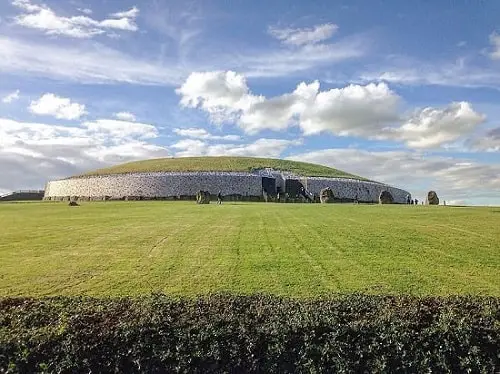
Newgrange was a megalithic Irish passage tomb built about 5200 years ago in the Neolithic age.
Located in Boyne valley in Ireland, Newgrange was erected even before Stonehenge and the pyramid of Giza.
The mound was surrounded by 97 kerbstones spread out over one acre. It had a 19-meter long chamber with a corbelled roof that overlapped until the rock sealed the entire top.
Basin stones stamped on the floors contained the remains of the dead found during the excavation process.
The monument’s entrance collected the most notable sculptures and works of Neolithic times.
The beautiful winter solstice sunrise illuminated the passage and the chambers.
Sunlight enters through the roof on Newgrange, penetrating the path to light up the section, lasting approximately 17 minutes during the winters.
The Neolithic culture of Boyne valley considered sunlight as an epitome of rebirth and regeneration of life to crops and animals.
Hence, Newgrange could be referred to as an ancient temple, a place of religious, astrological, and spiritual importance.
The sizeable kidney-shaped mound stood on the bend of river Boyne was built by farmers to mark the beginning of the new year and a potent symbol of victory of life over death.
Marvels
The ancient civilizations left behind the traces of their existence and live on world culture.
Their works were mentioned in poetry as well as stories from past centuries.
Mysterious wonders of the world that depicted early time architectures were the Great Wall of China, the Great Pyramid of Giza, the Statue of Zeus, and many more.
Great Pyramid of Giza
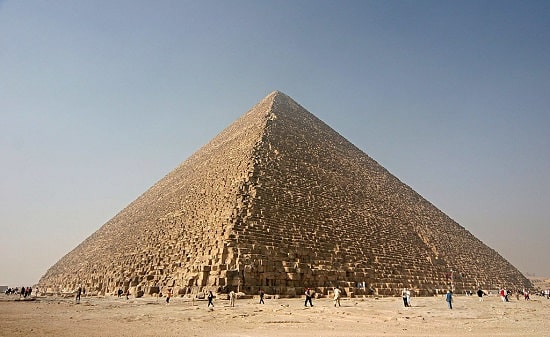
The tomb of fourth-century Khufu stood on the western bank of the River Nile in Egypt, is the only wonder of the ancient world in the present time.
The triple pyramids at Giza were constructed nearly 4000 years earlier, standing 147 meters high.
The Egyptian pharaohs hoped to become gods in their afterlives, but enormous temples and pyramids for themselves to sustain in the next world.
Hanging Garden of Babylon
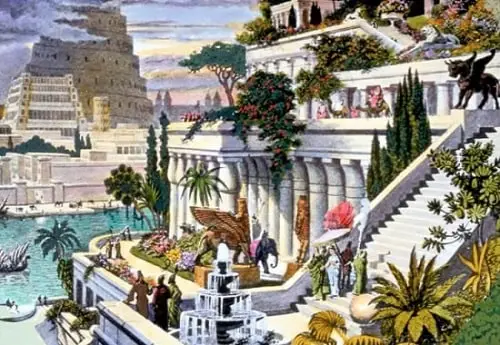
The hanging garden was estimated to have been built in Babylon, Iran, by king Nebuchadnezzar to give his wife, Semiramis.
To relieve the homesickness of the Persian princess, her husband ordered the building of a garden reflection greenery in around 600 B.C.
Even though it was enlisted as seven wonders of the world, no concrete evidence has been collected to prove the garden’s presence.
However, it was regarded as a marvel of agriculture with rich exotic fruits and flowers. And, is listed as one of the seven wonders of the world.
Colossus of Rhodes

As per Greek mythology, Helios, the sun god, was devoted to a gigantic bronze statue by Rhodians in the third century.
Almost 100 feet tall, the figure of Helios was built by selling the leftovers of Macedonians.
Chares of Lindos designed the statue that toppled off in an earthquake and was never rebuilt.
Mausoleum of Halicarnassus
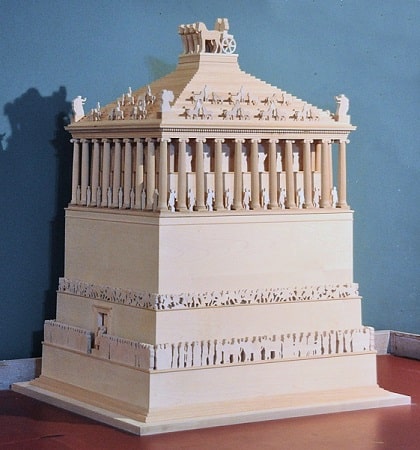
Queen Artemisia built a tomb in memory of her husband, King Mausolus of Carnia, in about 353 B.C.
It was located in Asia Minor, today’s Turkey, standing as one of the most impressive structures built by Greek architects.
The mausoleum was white marble adorned with eloquent carvings and art pieces.
A raid led by Alexander of Macedonia and a series of earthquakes finally shattered the 135 feet high mausoleum into pieces.
Lighthouse of Alexandria
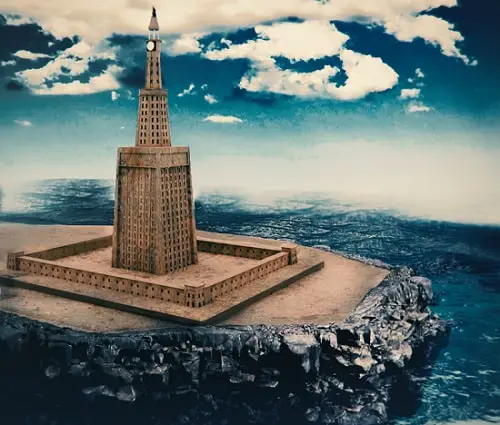
A Greek architect Sostratos built the lighthouse of Alexandria in 270 B.C on an island called Pharos.
The sole purpose of the lighthouse was to guide ships in and out of the city harbor in the Nile river.
Archeologists supported the idea of the lighthouse having three tiers: a square base, octagonal in the middle, and cylindrical on top.
A mirror was placed on the top to reflect sunlight in the day while the fire was lit at night.
Temple of Artemis
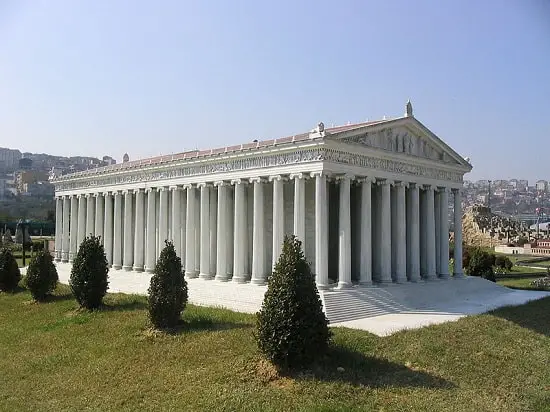
The Temple of Artemis was built in the name of the Greek goddess Artemis by a Cretan architect in around 350 B.C.
Fine sculptures and elegant paintings graced the marble temple.
Herostratus destroyed the temple to jot down his name in history but received death in return.
Furthermore, the government declared it illegal even to utter his word.
Malta’s Temples
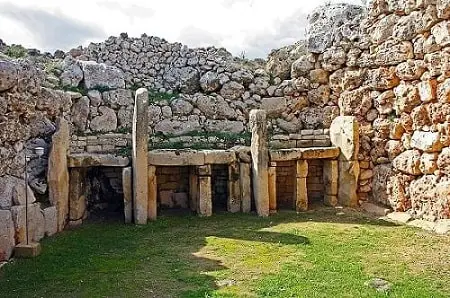
The megalithic temples found on the islands of Malta and Gozo were the primary freestanding stone buildings.
They were constructed in the 4 th and 3rd millennium B.C.
The series of temples in Malta were excellent examples of unique architecture, with each monument having different articulation and techniques.
The buildings had corbelled roofs, branched out into chambers made up of stones.
Some of the famous Malta temples are mentioned below:
Hagar Qim
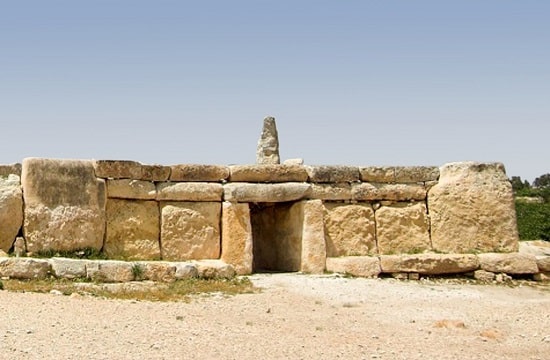
Hagar Qim was an ancient religious site on Malta island enlisted under the World Heritage site by UNESCO.
Builders used globigerina limestones that suffered weathering over time.
The temple consists of one main temple and three additional megalithic structures along with an impressive entrance.
It includes a facade, forecourt, elongated chambers, and a central passage connecting the rooms.
Architectural features of the Hagar Qim associated it with fertility rituals animal sacrifices; however, no burial sites were discovered.
Tarxien Temples

The Tarxien temples also served as a classical location in Tarxien, Malta. Built-in around 3150B.C, Tarxien temple was listed under World Heritage Site by UNESCO in 1922.
The temple had three separate yet attached temples embodied with intricate animal carvings, stoneworks, and spiral illustrations.
Historians believed it to be a site for animal sacrifice and later in the Bronze age used for cremation.
Skorba Temples
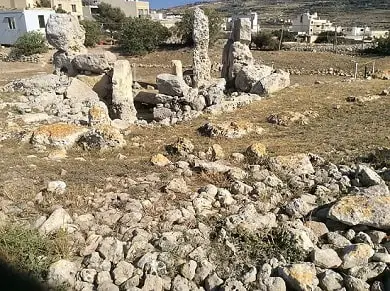
Skorba Temples provided affirmation of the exemplary Neolithic culture of Malta that contained the remains of Zebbiegh, Malta.
The remains found on this site were primarily the megalithic uprights, small huts, three apsed temples, and a stone-paved entrance.
Skara Brae
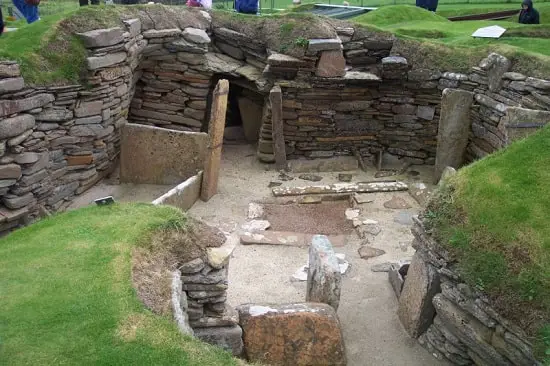
The Neolithic houses of Skara Brae were one of the most protected stone houses of Europe during the 3000 B.C.
A massive storm that hit Scotland in 1850 uncovered four ancient buildings under the dune on the Bay Skail appeared.
The clustered houses contained stone hearth, beds, cupboards, and a primitive drainage system in each place.
The effluents were directly carried to the ocean as people used water for flushing wastage into the drains.
Furniture found in the hoses was made out of stones due to the scarcity of trees on the island.
Houses were built of undressed stone slabs with sand mortar in between, and the walls had roughly drawn patterns all over them.
Hunebedden
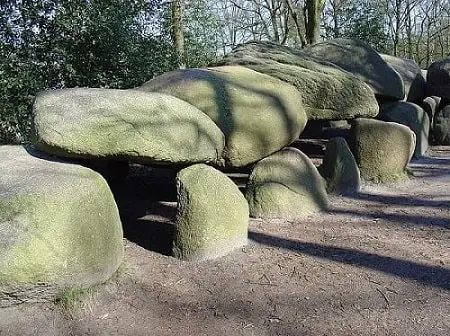
Hunebeddens were burial monuments made out of glacial rocks in the Netherlands.
The slow-moving ice glaciers transported large boulders concealed within a thick layer of ice from Scandinavia to Holland.
The graves were constructed nearly 5000 years ago by the members of Funnel Beaker Culture.
Archeologists have evacuated several humans remains from Hunnebeds, so they estimated it to be a burial site.
But their origins have always been a mystery.
Conclusion
Prehistoric people laid the foundation for modern architecture as they mitigated roaming and settled in exact locations.
Due to the broader availability of stones and rocks, houses made up of stones emerged.
Houses were stacked with clay, hay, or timber planks; stone houses encouraged people to explore more into architectural designs for the ease of their settlement.
Various civilizations like Mesopotamian, Summerian, and Macedonian erected their unique monuments with time.
Such sites got damaged in natural calamities over the centuries; however, the remaining were restored quickly and preserved well.
